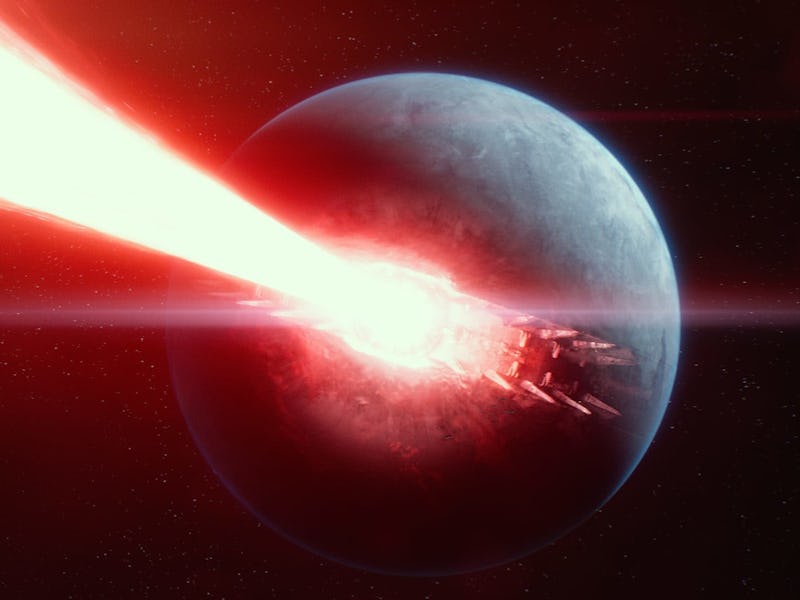The Mandalorian Just Revealed Why the New Republic Was Always Doomed
One minor scene explains a pivotal moment in Star Wars history.

The New Republic has always felt more like a concept than a real part of Star Wars history. The political system that replaced the Empire was introduced into modern canon in The Force Awakens — but only for long enough to get blown to smithereens. Ever since then, fans have wondered what exactly the New Republic was up to and why it was destroyed so easily. Now, thanks to The Mandalorian, we finally have our answer.
Technically, the entire story of The Mandalorian takes place during the era of the New Republic, but the show takes place in the outer rim of the galaxy, far away from the center of political power. That changed in Season 3 Episode 3 (“The Convert”), which followed ex-Imperial scientist Dr. Penn Pershing as he attempted to integrate into the New Republic on Coruscant. Through Pershing’s story, we not only get to see what life was like on the capital planet after the fall of the Empire, but we also finally find out why the New Republic was always doomed.
Dr. Pershing during his New Republic-mandated therapy.
Star Wars history lesson: The Military Disarmament Act
After signing up for the “Amnesty Program,” Pershing gets placed in a boring cubicle job helping to catalog all the Empire ships and weapons that the New Republic plans to decommission. However, his coworker casually notes that once they’re done with the old Imperial fleet, they need to move on to decommissioning the Rebel Alliance ships too.
That’s right, the New Republic isn’t just erasing the Empire, it’s also getting rid of its own military. But why?
The answer, in short, is the Military Disarmament Act. The law, which was passed soon after the Rebel Alliance rebranded itself as the New Republic, paved the way for a return to a peaceful political system that ruled through diplomacy rather than military might. In practice, it meant a drastic reduction of the standing military by about 90 percent. (The remaining 10 percent is made up of peacekeeping forces like the Rangers we saw in The Mandalorian Season 2.)
The Military Disarmament Act was originally proposed by Mon Mothma. As we saw in Andor, Mothma originally fought against the increasing militarization of the Empire from within, but she eventually realized that armed rebellion was the only choice. So it makes sense she’d want to disarm as quickly as possible.
Mon Mothma became the leader of the New Republic after defeating the Empire.
The law also served a second, more diplomatic purpose. As the New Republic forced the remaining Imperial forces to disarm, ditching its own military at the same time was a gesture of goodwill. Mothma and her supporters hoped it would convince supporters of the Empire to accept their new leaders.
But not everyone agreed with the Military Disarmament Act...
The fall of the New Republic
One of the biggest critics of demilitarization during this era of Star Wars was Leia Organa. Having seen the brutality of the Empire firsthand, she assumed (correctly) that they wouldn’t just go away. Maintaining an army was the only way to deter that threat.
This eventually led to Leia being pushed out of the senate. She went on to create the Resistance, which found its purpose when the remains of the Empire transformed into the First Order. Unfortunately, the Resistance wasn’t powerful enough to stop the First Order, and... well we all know what happened next.
Princess Leia never accepted the Military Disarmament Act.
So to sum it all up, because the Rebel Alliance chose to dismantle its own military, the Empire was able to return, build a massive weapon, and destroy the entire New Republic in one fell swoop.
The New Republic may seem strong in The Mandalorian, but as we see in Season 3 Episode 3, the beginning of the end has already begun.
The Mandalorian is streaming on Disney+.
This article was originally published on